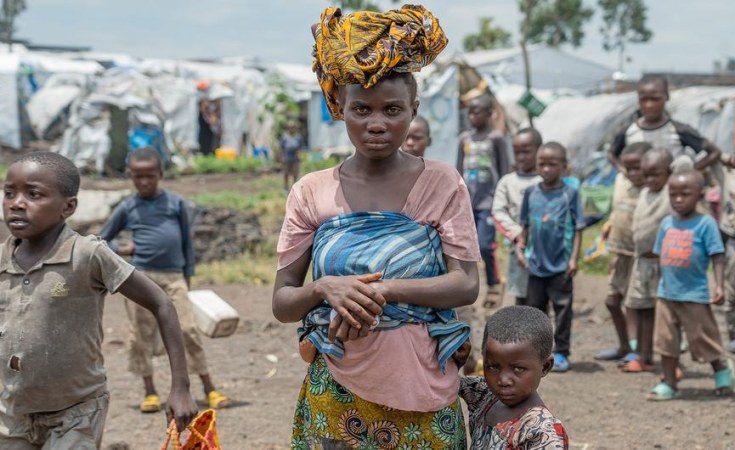Kinshasa — There are 25.6 million people who continue to face crisis or emergency levels of food insecurity in the Democratic Republic of the Congo (DRC), according to the latest Integrated Food Security Phase Classification (IPC) report. Armed violence, continued conflict and soaring food prices are driving acute food insecurity affecting displaced people and returnees. Despite high levels of hunger, the DRC boasts fertile lands and abundant water resources and possesses the inherent capacity to attain self-sufficiency in food production. However, various factors such as the intensifying conflict in east , the impact of climate change and epidemics, and a lack of investment in rural development prevent the country from attaining food sufficiency.
While overall food insecurity levels in the DRC remain stagnant, the situation in the eastern provinces of Ituri, North Kivu, and South Kivu has deteriorated. Driven by conflict and continued displacement, 6.2 million people are expected to face crisis or emergency levels of hunger, up from 5.4 million in mid-2024. Due to intense flooding, Tanganyika is now the most food insecure province in DRC.
"The IPC figures speak for themselves. We need to take action and ensure that livelihood support is provided at the appropriate level. FAO is committed to strengthening the resilience of households facing food insecurity through targeted interventions that address the impacts of climate change in the agriculture, fisheries, and livestock sectors," said FAO representative Aristide Ongone Obame.
The conflict in eastern DRC has disrupted vital agriculture production and the growth of essential infrastructure. This is a crisis fueled by shifting armed group dynamics and resource struggles, exacerbated by deep-rooted geopolitical tensions. As a result, more than 6.5million people are now displaced from their homes in the three eastern provinces of Ituri, North Kivu, and South Kivu.
"In 2025 we need to work more on resilience and strengthening the food systems in the DRC to help move families out of hunger," said Peter Musoko, the United Nations World Food Programme's (WFP) Country Director and Representative in the DRC. "In such a fragile context, the cost of inaction is truly unthinkable. Together, we need to work with the government and the humanitarian community to increase resources for this neglected crisis."
Despite needs outpacing available resources, WFP reached 1.95 million people in October 2024 alone. As humanitarian needs continue to grow, WFP faces a critical funding gap of US$ 350 million over the next six months to provide essential food and nutrition assistance to the most vulnerable people.
In 2024 FAO needed US$ 233.9M for its assistance in the DRC. As of end of September FAO has assisted 3.0 million people out of the 3.6 million planned and requires more financial resources to meet the current gap.


